You are here
Deserts of Turkmenistan.
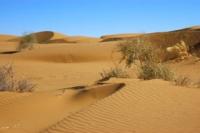
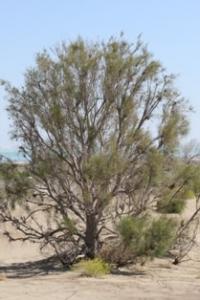
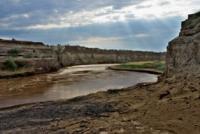
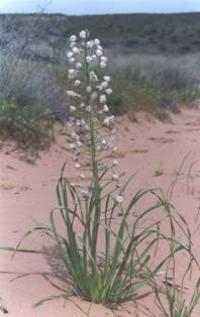
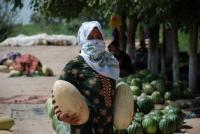
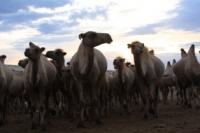
Trips around river channel of Western Uzboya.
"It's beautiful out there."
A hesitation, before, "Could you be more specific?"
"The sky is gorgeous, intense blue color." She pressed her fingers to the glass and traced the wavy hills on the horizon.
"Oh, good. You've really narrowed it down for me."
"I'm sorry, it's just..." She tried to stamp down the rush of emotion. "I think we're in a desert."
"Cactuses and tumbleweeds?"
"No just a lot of sand. It's kind of orangish-gold, with hints of pink, and I can see tiny clouds of it floating above the ground, like...like smoke."
"Piles up in lots of hills?"
"Yes, exactly! And it's beautiful."
Thorne snorted. "If this is how you feel about a desert, I can't wait until you see your first real tree. Your mind will explode.”
Marissa Meyer. “Cress”.
Tours in Kara Kum Desert in Turkmenistan.
The Great Turkmen poet Seidi said: «All lands are squalid before you, the desert». Yes, the desert is stately and in cognizable definitely yet. By no means it is lifeless as it is sometimes presented in books. The desert is the home for a great number of plants and animals including a series of birds populating the Karakum both in sultriness and hard frost.
The desert is usually pictured as a continuous ridge of sandy waves - dunes. But for the Karakum desert, for instance, such landscape is not typical. Here hilly sands covered by thickset of shrub and grass prevail.
Even forests of black haloxylon are met here. As for sand, it is not everywhere, vast loamy plains - takyrs (takyr means «bare, bald»), are available either. Sections of saline soils occur as well (they are usually in the stagnant cavities), and heights - such as an extensive Kaplankyr plateau. «Dry rivers» are also available.
The Western Uzboi is the most notable. It originates from Sarakamysh lake, crosses the desert and «flows into» the Caspian sea. Its river-bed length, where formerly the Amudarya waters streamed, is 775 kilometers including channels.
Salt-marsh depressions in the Uzboi valley are alternated with salt lakes. One of them has become renowned all over the world as Mollakara resort for mud-cures, it is this resort that has begotten either a true story or a legend. In ancient times an old shepherd called Gara-aga made for through this land.
Here a yashuli was seized up with a bout of rheumatism. He submerged his sick legs into the lake and the pain, as under magic wand, receded. In few days spent nearby the curative water the old man completely forgot about his ailment of long standing.
And afterwards, on healthy legs already, he spread the fame about this wonderful place all over the world. Today Mollakara is a super modern clinic of the world class. Such kind of trace the capricious Amudarya had left before it «directed» its impetuous waters to the Aral.
As a rule, in the desert stagnant lakes are extremely salty. But in Turkmenistan three absolutely unique fresh reservoirs have been formed along the Western Uzboi: Yaskhan, Karateghelen and Topyatan. For a long time investigators have been racking their brains over the mystery.
But hydrologists have explained that these lakes feed the underground outflows from the vast massive of Zauzboi dunes. The massive itself is famous for gigantic - up to 50 meters high - sand- dunes as well as graceful sandy acacia.
It is a sole deciduous plant of all arboreal ones in the Karakum desert. The others annually shoot out only green sprouts - thus liquid is saved. So the Karakum desert is by no means waterless. Underneath its sands a continuous stratum of salty underground waters beds.
Thereon lenses of fresh water «float» as they are lighter. The Turkmen proverb says: «Gum bar - suw bar» («There is sand - there is water either»). And it is really true, for dunes are formed of winnowed coarse sand that is easily soaked by precipitation.
Kumli (people of sands) are perfectly aware of this peculiarity and dig wells at the takyrs and dunes junction. Owing to their hard work, in the Karakum desert thousands of wells were created that from the earliest times supplied with potable (even if saltish) water millions of heads of sheep and camels.
As you see, the Turkmens always rendered habitable the desert. It is especially true nowadays when the man- made Karakumdarya functions, when capacious reservoirs and canals, and the water supply of settlements are arranged.
In the current of the desert is associated with the creation of the Turkmen lake. By 2005 a gigantic hollow in the geographical centre of the country will have been filled with waters from a number of collectors. The most advanced technologies will be used for their purification to re-circulate a precious liquid.
And then a great water mirror will undeed transform the desert into a blossoming oasis. As scientists presume the climate will become milder, sown areas will enlarged, optimal conditions will be created to develop the richest natural resources of the Karakum desert.
Such lofty goals are set before the independent Turkmen state. But the Karakum desert is self-valuable irrespective of the interior resources. Its ecosystem is so balanced on the verge of extreme conditions that these conditions themselves have founded the basis for the life of unique organisms.
There is a good deal of animals here that never drink water, there is a considerable amount of plants here that can exist only under the scorching sun of the desert. So, the assessment - «severe climate» we can consider to be tourists' emotions.
Those who are free from them, i.e. scientists, have been comprehending the phenomenon of the life in the Karakum desert at the sandy-desert station of renowned Repetek wildlife santuary. It occupies the south-eastern part of sands on the area of 34600 ha and includes all landscape zones of the great desert.
Local endemics (they include only tens of species) are carefully protected and studied. The Amudarya wildlife sanctuary (the area is 49500 hectares) partly covers the desert territory, its primary and final concern associates with the ecological well- being of the river and its valley.
By the way, for three years already a project on preservation of the Bukhar deer population has been realizing here. As a whole the Amudarya wildlife sanctuary presents a model of natural reservation of tugai sandy-desert fauna.
Authority:
Book “Nature of Turkmenistan”. Ashgabad. 2002.
Photos
Alexander Petrov.






